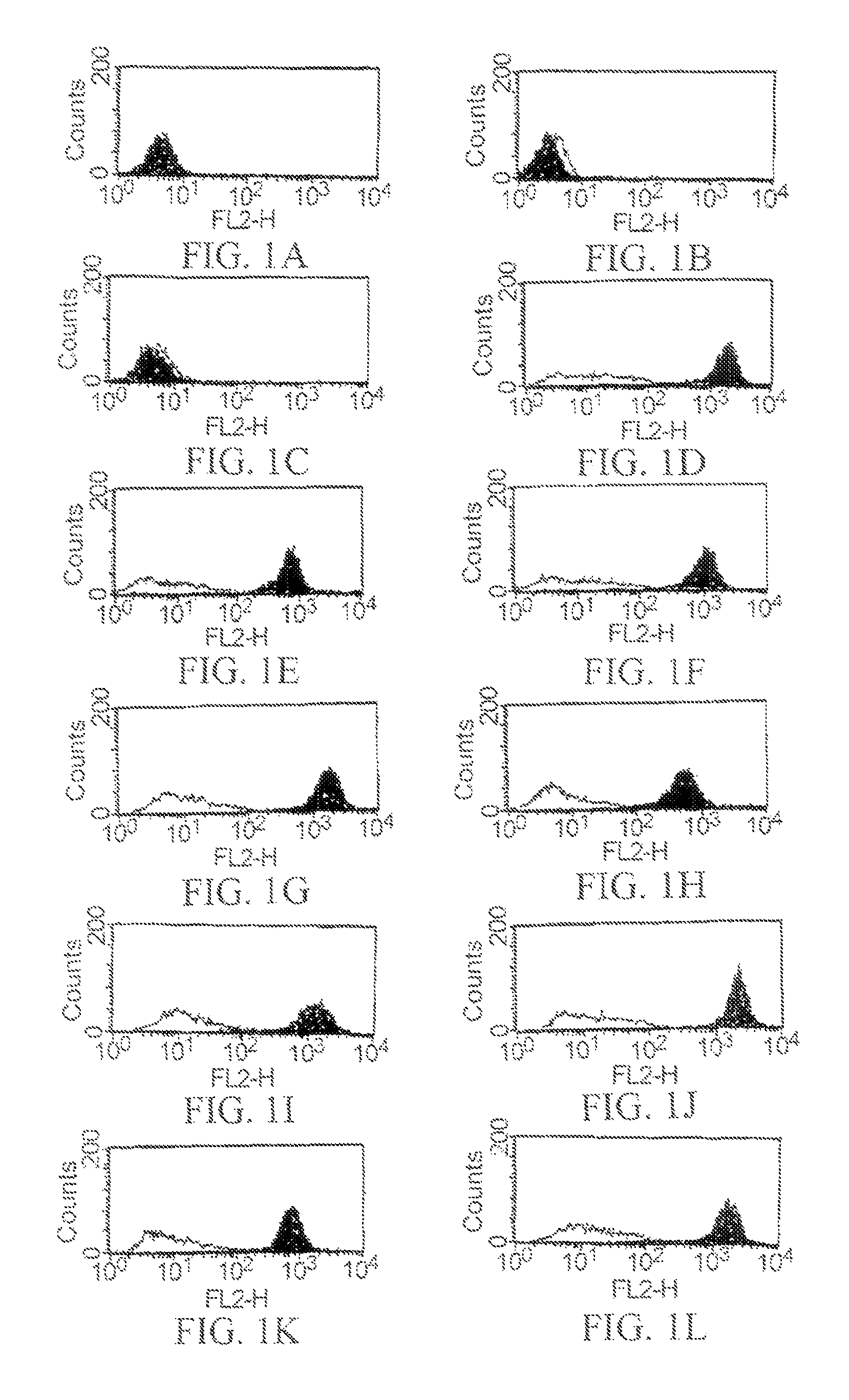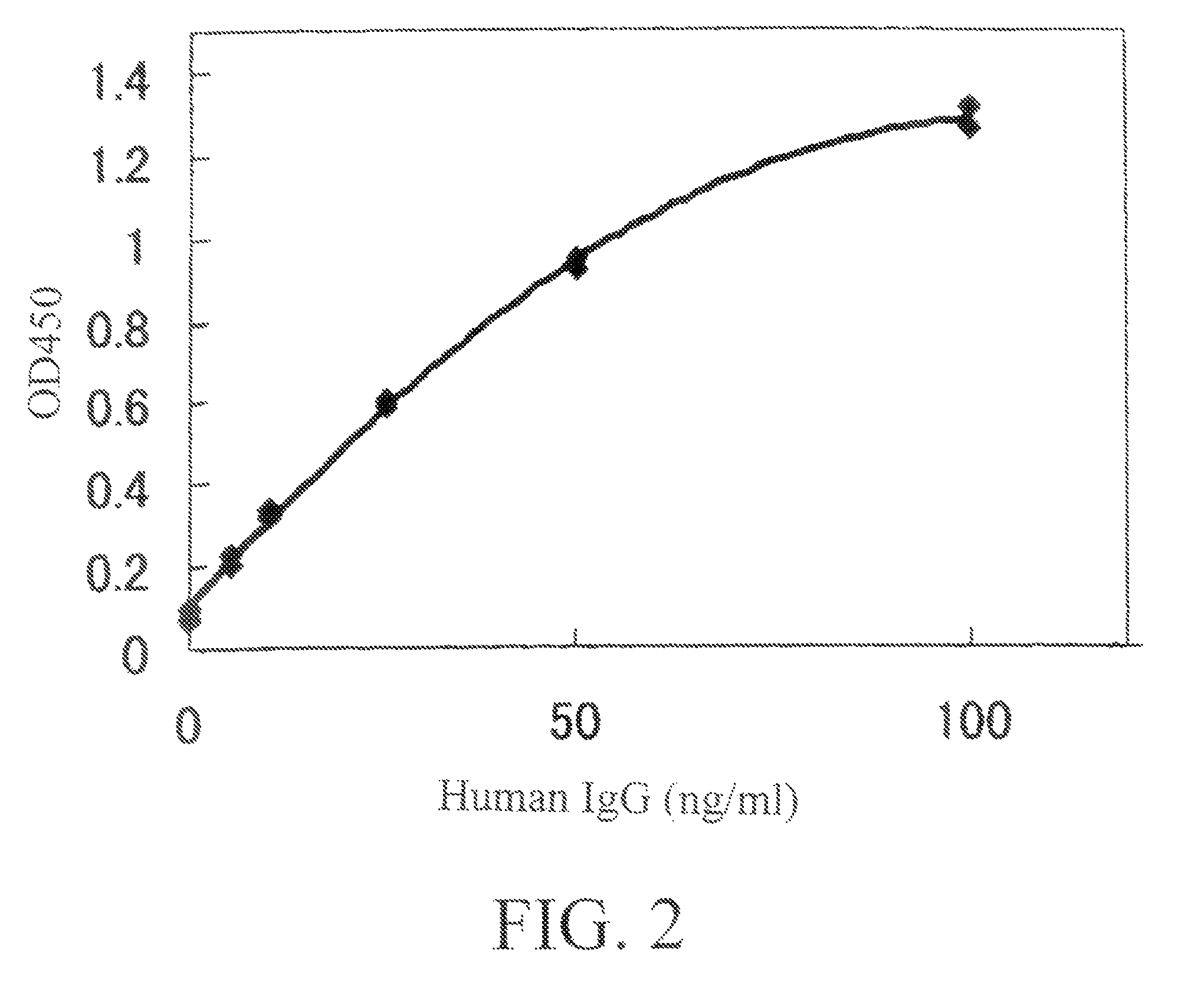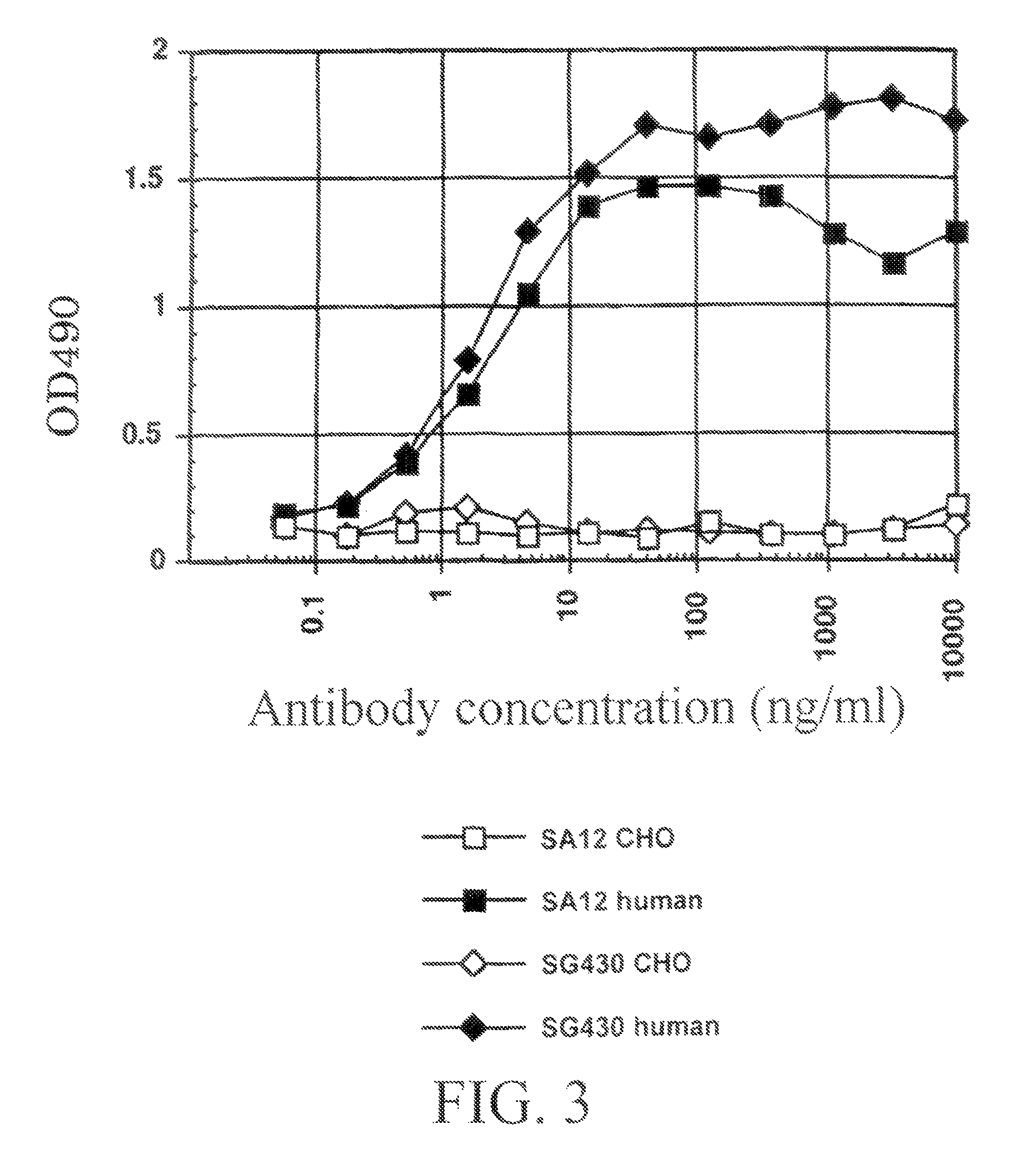Methods of treating systemic lupus erythematosus with an antibody against costimulatory signal transduction molecule ailim
a technology of costimulatory signal and antibody, applied in the field of human antibodies, can solve the problems of unclearly clarified in detail, unresponsiveness or clonal anergy
- Summary
- Abstract
- Description
- Claims
- Application Information
AI Technical Summary
Benefits of technology
Problems solved by technology
Method used
Image
Examples
example 1
Preparation of Immunogen
Preparation of Recombinant Cell Expressing Human AILIM
[0947]Two types of recombinant cells (CHO cell and HPB-ALL cell) overexpressing human AILIM were prepared according to the method as described in earlier applications (JP-A No. Hei 11-29599 and WO98 / 38216), as well as in a previous report (Int. Immunology, Vol. 12, No. 1, p. 51-55, 2000) of one of the present inventors, Tezuka. Specifically, the method is as follows:
[0948]A cDNA (GenBank Accession Number: AB023135 (cDNA); BAA82129 (amino acid )) containing the full-length ORF encoding human AILIM was inserted into a vector pEF-neo. Then the resulting recombinant expression vector was introduced into Chinese hamster ovary cells (CHO cell) and cells of a human thymoma line, HPB-ALL, according to a commonly used method using electroporation (960 μF, 320V) with a Gene Pulser (BioRad). Respective cells were cultured in RPMI1640 medium containing Geneticin (0.8 mg / ml; Gibco BRL) and 10% FCS to select drug-resis...
example 2
Preparation of Hybridoma Producing Human Anti-human AILIM Monoclonal Antibody
[0955]In the present Example, preparation of monoclonal antibody was carried out according to a typical method as described in “Experimental Medicine (supplement), Handbook for Cell Technology” (eds., T. Kuroki et al., Yodosha, pp. 66-74, 1992) and “Experimental Manual for Monoclonal Antibody” (T. Ando et al., Kodansha, 1991).
[0956]Cell membrane fraction prepared from recombinant cells overexpressing human AILIM provided in Example 1 was used as the immunogen of human AILIM.
[0957]Animals subjected to immunization were human antibody-producing transgenic mice created by above-described method (Nature Genetics, Vol. 7, p. 13-21, 1994; Nature Genetics, Vol. 15, p. 146-156, 1997; Published Japanese Translation of International Application No. Hei 4-504365; Published Japanese Translation of International Application No. Hei 7-509137; Nikkei Science, June, pp. 40-50, 1995; etc.).
[0958]Multi-well microplates were ...
example 3
Analysis of Properties of Monoclonal Antibody
3-1> Analyses of the Heavy Chain and Light Chain
[0990]By using ELISA and flow cytometry described below, it was verified that the monoclonal antibody against human AILIM produced by each hybridoma clone, which had been cloned in described above, was indeed a human monoclonal antibody.
[0991]The recombinant HPB-ALL cells overexpressing human AILIM, which had been prepared in Example 1, were plated in each v-shaped well of microplate (3×104 cell / well). Cells were cultured at 37° C. in RPMI1640 medium containing 10% FCS.
[0992]After the culture was completed, the plate was centrifuged (at 1,800 rpm for 2 minutes) to precipitate the cells, and then the resulting supernatant was discarded. Subsequently, supernatant sample (50 ml / well) from the culture of each hybridoma cloned in described above, or mouse anti-human AILIM monoclonal antibody SA12 (2 μg / 50 μl) or alternatively human anti-KLH monoclonal antibody (50 μl / well) as a control antibody...
PUM
 Login to View More
Login to View More Abstract
Description
Claims
Application Information
 Login to View More
Login to View More - R&D
- Intellectual Property
- Life Sciences
- Materials
- Tech Scout
- Unparalleled Data Quality
- Higher Quality Content
- 60% Fewer Hallucinations
Browse by: Latest US Patents, China's latest patents, Technical Efficacy Thesaurus, Application Domain, Technology Topic, Popular Technical Reports.
© 2025 PatSnap. All rights reserved.Legal|Privacy policy|Modern Slavery Act Transparency Statement|Sitemap|About US| Contact US: help@patsnap.com



